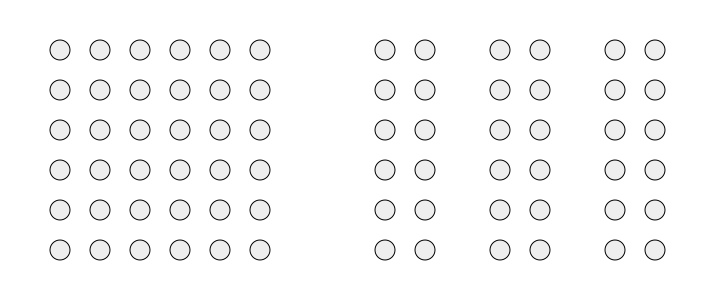The Law of Proximity:
Stimulus elements that are close to each other tend to be perceived as a group. For example, in the image below, the circles that are close together are grouped together, resulting in four groups.

The Law of Similarity:
Stimulus elements that are similar tend to be grouped together. For example, people tend to see the circles below as horizontal rows of black and white circles.

The Law of Closure:
Stimulus elements are grouped together if they seem to complete a "regular" figure. For example, we tend to think that there is a triangle in the image below, while in reality there isn't.

Law of Continuity:
Stimulus elements are grouped together to make the image look more "smooth." For example, in the following image you are probably going to see two straight lines instead of two V's.
Law of Symmetry:
Stimuli tend to be grouped such that each group consists of a symmetric figure. For example, we see the following image as three pairs of closed brackets instead of six individual brackets.
Law of Simplicity
Stimuli are perceived in a way that makes them as simple as possible. For example, we tend to perceive the image below as six triangles rather than as some other combination of shapes.


